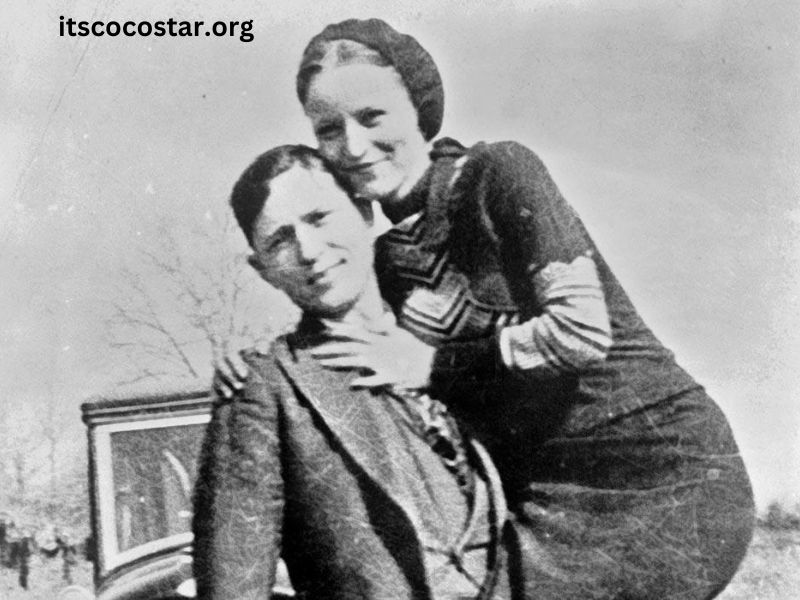The tale of Bonnie Parker and Clyde Barrow is one of the most infamous stories in American criminal history. Their exploits during the Great Depression, marked by a series of bank robberies, burglaries, and violent confrontations with law enforcement, captivated the public and created a mythos around the duo that endures to this day. However, while their lives were filled with drama and romance, their deaths brought a grim end to their notorious saga. The autopsy photos of Bonnie and Clyde, taken after they were ambushed and killed by law enforcement in 1934, serve as stark reminders of the violent reality behind their glamorous image.
The Context of Bonnie and Clyde’s Life of Crime
Bonnie and Clyde met in Texas in 1930 and quickly became involved in a romantic relationship that was intertwined with a life of crime. During the Great Depression, the duo gained notoriety for their bold robberies and their ability to evade capture. They were part of a larger gang, the Barrow Gang, which included other criminals like Raymond Hamilton and W.D. Jones.
Their crimes, often portrayed in the media as Robin Hood-like escapades, were marked by violence. The couple was involved in several shootouts with police and rival gangs, leading to multiple deaths. They became public figures, and their exploits were sensationalized in newspapers, creating a fascination that blurred the line between criminality and celebrity.
The Final Days
Bonnie and Clyde’s crime spree came to a tragic end on May 23, 1934, when they were ambushed by law enforcement officers in Bienville Parish, Louisiana. A group of lawmen, led by Texas Ranger Frank Hamer, had been tracking them for months. The ambush was meticulously planned; law enforcement had set up a blockade on the road that Bonnie and Clyde were traveling on.
When the couple drove into the trap, the officers opened fire. In the hail of bullets, both Bonnie and Clyde were killed almost instantly. The scene of their deaths was chaotic, with gunfire erupting and the couple’s car riddled with bullets. The ambush not only marked the end of their lives but also solidified their status as icons of American crime.
The Autopsy Photos
The autopsy photos of Bonnie and Clyde were taken shortly after their deaths. These images have sparked a mixture of fascination and horror, as they capture the brutal reality of their demise. The photos reveal the extent of their injuries: Bonnie’s lifeless body is shown with numerous bullet wounds, particularly to her head and torso, while Clyde’s body bears similar marks of violence.
The graphic nature of these images is unsettling. They serve as a chilling contrast to the romanticized versions of Bonnie and Clyde’s story often depicted in films and literature. The photos were initially meant for official records, but they quickly became part of a sensational narrative surrounding the couple’s lives and deaths.
The Impact of Autopsy Photos on Public Perception
The release and circulation of Bonnie and Clyde’s autopsy photos played a significant role in shaping public perception. In the wake of their deaths, the couple was transformed from notorious criminals into cultural icons. The gruesome imagery contributed to the mythologizing of their story, with their romantic relationship being highlighted against the backdrop of their violent end.
These photos fueled public interest in true crime and shaped the narratives surrounding outlaw figures in American history. The fascination with Bonnie and Clyde exemplifies how crime can be romanticized, especially when intertwined with elements of youth, rebellion, and tragedy.
Ethical Considerations
The circulation of autopsy photos raises important ethical questions. Many argue that such images should be treated with respect and sensitivity, especially given the tragic circumstances of Bonnie and Clyde’s deaths. Critics of the sensationalism surrounding these images contend that they dehumanize the individuals involved and exploit their suffering for voyeuristic purposes.
In a modern context, the debate over the ethics of sharing graphic images is more relevant than ever. With the rise of social media and instant news, the potential for graphic content to spread quickly raises concerns about the impact on victims’ families and society at large.
Legacy of Bonnie and Clyde
The legacy of Bonnie and Clyde is multifaceted. While their criminal actions were undeniably violent, their story has often been romanticized in popular culture. Films, songs, and books have continued to explore their lives, frequently focusing on their love story and the allure of the outlaw lifestyle.
The autopsy photos, while disturbing, serve as a sobering reminder of the consequences of their actions. They encapsulate the brutal reality that often underlies the glamorous depictions of crime in media. Bonnie and Clyde’s story has become a cautionary tale, illustrating the tragic consequences of a life of crime.
Cultural Representations
In the decades following their deaths, Bonnie and Clyde have been depicted in numerous films and television shows. The most notable representation is the 1967 film “Bonnie and Clyde,” directed by Arthur Penn and starring Faye Dunaway and Warren Beatty. This film romanticized their relationship and portrayed them as tragic antiheroes, contributing to the ongoing fascination with their story.
The film’s portrayal of Bonnie and Clyde was groundbreaking for its time, using innovative filmmaking techniques and challenging societal norms. However, it also glossed over the violence and devastation caused by their criminal activities, opting instead to focus on their love and rebellion.
Later adaptations, including various documentaries and dramatizations, have attempted to provide a more balanced view of their lives. Still, the allure of the outlaw couple remains strong, with many viewing them through a lens of romantic nostalgia.
Conclusion
The autopsy photos of Bonnie and Clyde encapsulate the grim reality behind the legends surrounding their lives. While they became cultural icons, their story is a reminder of the violence and tragedy that often accompanies a life of crime. These images challenge us to confront the darker aspects of their legacy and consider the implications of glorifying such figures.
As society continues to grapple with the ethics of media representations of crime and violence, the story of Bonnie and Clyde remains a poignant example of the complexities inherent in our fascination with outlaw figures. Their lives and deaths continue to inspire discussions about crime, morality, and the human condition, serving as both a cautionary tale and a source of enduring intrigue.







